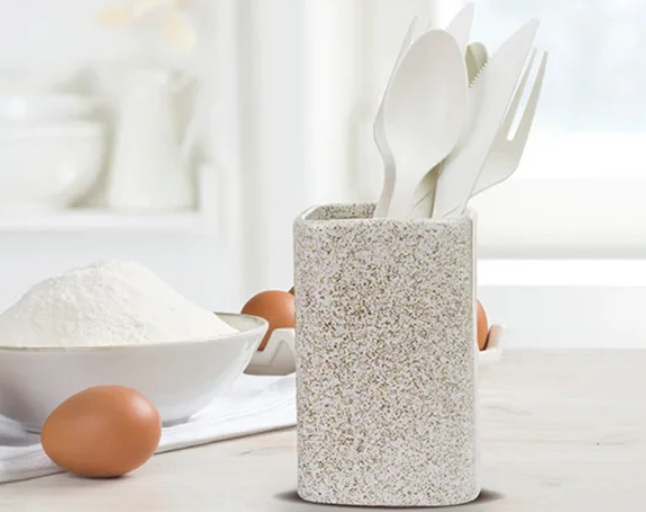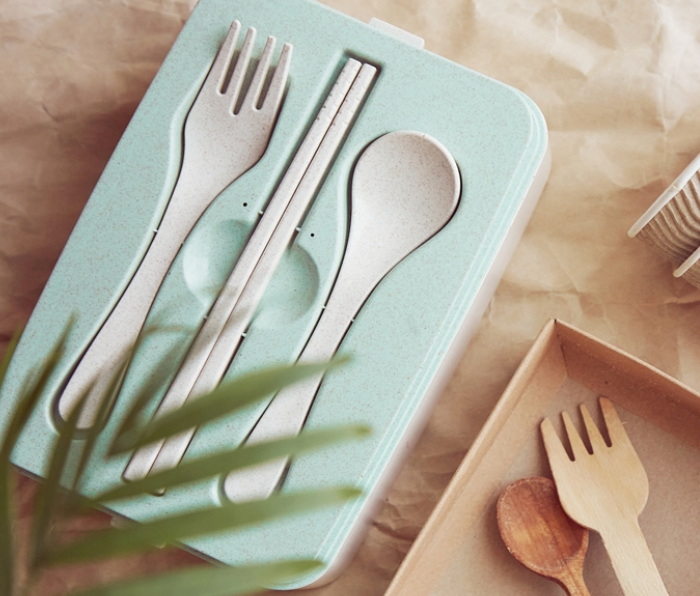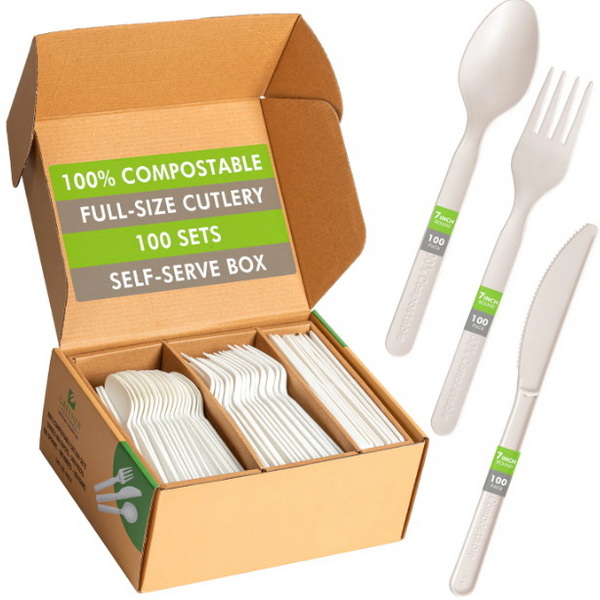
Content Menu
● What Is Plant-Based Disposable Cutlery?
● How Is Plant-Based Cutlery Compostable?
>> Industrial Composting Requirements
>> Home Composting Challenges
● Benefits of Plant-Based Disposable Cutlery
>> Environmental Advantages
>> Economic Opportunities
● Challenges of Compostable Cutlery
● Innovations in Plant-Based Cutlery
>> Recycling PLA into Foam
>> Edible Cutlery
● Consumer Preferences for Eco-Friendly Cutlery
>> Growing Demand
>> Barriers to Adoption
● Case Studies: Adoption of Plant-Based Cutlery
>> Restaurants Leading the Way
>> Event Management Companies
● Future Outlook for Plant-Based Disposable Cutlery
● Conclusion
● FAQs
>> 1. What materials are used in plant-based disposable cutlery?
>> 2. Can I compost plant-based cutlery at home?
>> 3. How long does it take for plant-based cutlery to decompose?
>> 4. Are there any drawbacks to using plant-based disposable cutlery?
>> 5. What are the benefits of switching to plant-based disposable cutlery?
In recent years, the push for sustainable alternatives to single-use plastics has led to innovative solutions such as plant-based disposable cutlery. These utensils are marketed as eco-friendly and compostable, but how effective are they in reducing environmental impact? This article explores the materials, compostability, benefits, challenges, innovations, consumer adoption, and future of plant-based cutlery.

What Is Plant-Based Disposable Cutlery?
Plant-based disposable cutlery refers to utensils made from renewable resources such as corn starch, sugarcane, bamboo, or other plant fibers. Unlike traditional petroleum-based plastics, these materials are biodegradable and designed to break down under specific conditions. Commonly used materials include:
- Polylactic Acid (PLA): Derived from corn starch or sugarcane, PLA mimics traditional plastic but is biodegradable under industrial composting conditions.
- Bamboo: A fast-growing plant that provides durable, pest-resistant cutlery suitable for composting in both industrial and backyard systems.
- Palm Leaf: Made from fallen Areca palm leaves, palm leaf cutlery is completely organic and decomposes naturally without releasing toxins.
Plant-based cutlery offers a promising alternative to reduce the environmental footprint of disposable utensils.
How Is Plant-Based Cutlery Compostable?
Industrial Composting Requirements
Most plant-based cutlery is designed for industrial composting facilities where high temperatures (above 140°F), controlled humidity, and oxygen-rich environments enable rapid decomposition. Enzymes in compost piles break down the material into water, carbon dioxide, and organic matter within 60 to 180 days.
Home Composting Challenges
While some materials like bamboo and wood can decompose in home compost piles, others—like PLA—require specific conditions unavailable in backyard setups. For example:
- Bamboo decomposes within four to six months under natural conditions.
- PLA requires commercial facilities due to its crystallized structure.
Benefits of Plant-Based Disposable Cutlery
Environmental Advantages
1. Reduced Carbon Footprint: Manufacturing bioplastics emits fewer greenhouse gases compared to petroleum-based plastics. Plants absorb CO2 during growth, further offsetting emissions.
2. Decreased Fossil Fuel Dependency: Using renewable resources like sugarcane or bamboo reduces reliance on finite fossil fuels.
3. Enhanced Waste Management: Compostable cutlery supports nutrient cycling and reduces landfill waste when disposed of correctly.
Economic Opportunities
The production of plant-based cutlery creates employment opportunities in rural areas. For instance:
- Palm leaf cutlery manufacturing has generated jobs for over 20,000 families in India since 2019.
- Bamboo cultivation projects have reduced unemployment rates in countries like India and China.
Challenges of Compostable Cutlery
1. Limited Composting Infrastructure: Many regions lack industrial composting facilities needed for proper decomposition of PLA-based utensils. This results in these products ending up in landfills where they degrade slowly.
2. Durability Issues: Some eco-friendly utensils struggle with heat resistance or sturdiness. For example, bamboo forks may snap under pressure during use.
3. Cost and Availability: Plant-based cutlery can be more expensive than traditional plastic alternatives and may not be readily available everywhere.

Innovations in Plant-Based Cutlery
Recycling PLA into Foam
Researchers have developed methods to repurpose PLA into foam for applications like building insulation or flotation devices. This innovation could prevent PLA from lingering in landfills while creating value-added products.
Edible Cutlery
Brands like Stroodles offer edible utensils made from wheat flour and other ingredients, providing a zero-waste solution while adding novelty to dining experiences.
Consumer Preferences for Eco-Friendly Cutlery
Growing Demand
Consumers are increasingly prioritizing sustainability in their purchasing decisions. Surveys indicate that over 70% of respondents prefer eco-friendly products even if they come at a higher cost. This shift has driven demand for plant-based disposable cutlery across restaurants, catering services, and retail stores.
Barriers to Adoption
Despite growing interest:
- Lack of awareness about proper disposal methods limits widespread use.
- Misleading marketing claims can confuse consumers about what is truly compostable versus biodegradable.
Educating consumers about how to correctly dispose of plant-based cutlery is essential for maximizing its environmental benefits.
Case Studies: Adoption of Plant-Based Cutlery
Restaurants Leading the Way
Many restaurants have embraced plant-based disposable cutlery as part of their sustainability initiatives:
- In the United States, fast-casual chains like Sweetgreen exclusively use compostable utensils made from PLA.
- European cafes have adopted bamboo cutlery paired with biodegradable plates to align with stricter EU regulations on single-use plastics.
Event Management Companies
Large-scale events such as music festivals and conferences have also incorporated plant-based cutlery into their waste management plans:
- The Glastonbury Festival in the UK eliminated plastic utensils entirely by switching to palm leaf alternatives.
- Corporate events hosted by Fortune 500 companies now feature compostable tableware as part of their green branding strategies.
Future Outlook for Plant-Based Disposable Cutlery
The future of plant-based disposable cutlery looks promising due to advancements in material science and increasing global awareness about sustainability. Key trends include:
1. Improved Materials: Research into hybrid bioplastics combining PLA with natural fibers aims to enhance durability while maintaining compostability.
2. Policy Support: Governments worldwide are introducing bans on single-use plastics and incentivizing businesses to adopt eco-friendly alternatives.
3. Circular Economy Models: Companies are exploring ways to integrate plant-based cutlery into closed-loop systems where used utensils are collected, composted, and repurposed into new products.
As these developments unfold, the adoption of plant-based disposable cutlery will likely accelerate across industries.
Conclusion
Plant-based disposable cutlery represents a significant step toward sustainable living by reducing reliance on plastics and minimizing environmental impact. However, its effectiveness depends on proper disposal methods and the availability of composting facilities. As technology advances and public awareness grows, plant-based cutlery has the potential to become a cornerstone of eco-friendly dining.

FAQs
1. What materials are used in plant-based disposable cutlery?
Plant-based disposable cutlery is made from renewable resources such as corn starch (PLA), sugarcane fibers, bamboo, palm leaves, and wood. These materials are biodegradable under specific conditions.
2. Can I compost plant-based cutlery at home?
Some materials like bamboo and wood can decompose in home compost piles within months. However, PLA requires industrial composting facilities due to its crystallized structure.
3. How long does it take for plant-based cutlery to decompose?
Decomposition time varies by material:
- Bamboo: 4–6 months.
- Sugarcane fibers: Less than 60 days.
- PLA: 180 days in commercial facilities.
4. Are there any drawbacks to using plant-based disposable cutlery?
Yes:
- Limited availability of industrial composting facilities.
- Higher costs compared to plastic alternatives.
- Durability issues with certain materials like bamboo forks under pressure.
5. What are the benefits of switching to plant-based disposable cutlery?
Benefits include reduced carbon footprint, decreased fossil fuel dependency, enhanced waste management through composting, and economic opportunities for rural communities involved in production.

















